Part 6: 1404-The Fortress Town of Stonehome
The Fortress Town of StonehomeAs 1404 opened, Stonegate saw the completion of a food market, slaughterhouses, and breweries, while the irrigated land near the town began to see a program of improved cultivation and manuring. With this development, the town was better-fed and supplied by the settlers in its outlying district, and it began to prosper further.
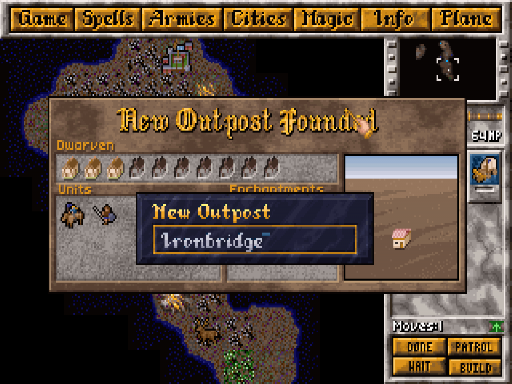
By Thirdmonth, settlers began establishing homesteads and mining camps in the Blackwater Valley and its surrounding regions. The slow process of taming the region had begun. To ease travel across the Blackwater, some engineers amongst the settlers span the river with a bridge framework of iron supporting a walkable surface of long wooden planks.
New settlements begin as 'Outposts', which have no effective economic output for you, and population measured in tenths of a population unit. Each turn, the population has a chance to grow or shrink, dependent on the surrounding conditions in the land. If the population reaches 10 full tenths of a unit, the settlement grows into a full-fledged hamlet which begins to act as a town. If the population shrinks to 0, this attempt at settling the region fails.
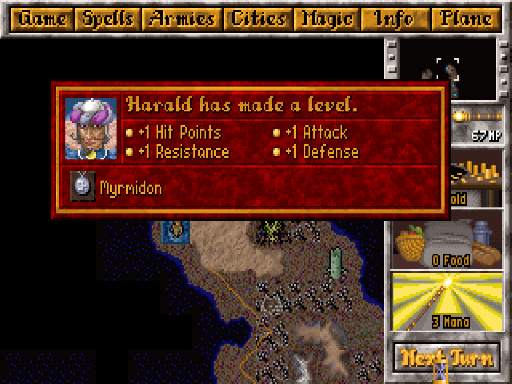
The Golden Company's continued drills were translating into increased readiness for the little band of mercenaries. Harald Gjafvaldursson noted the growing accuracy of his dwarves even as the engineers finally completed the road across the Red Desert linking Goldwash and Stonegate. The team of engineers were able to return to Goldwash in a single day, and begin to extend the road southward towards the Blackwater Valley. Shortly after the road was completed, Queen Dagmaer sponsored a program to copy the books in the library of Goldwash to a new library in Stonegate, while working to make copies of the books in Stonegate so they could be collected into the library of Goldwash.
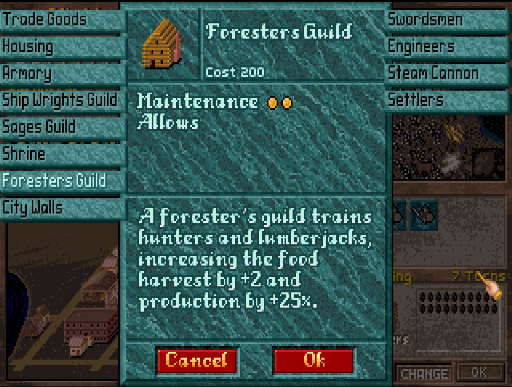
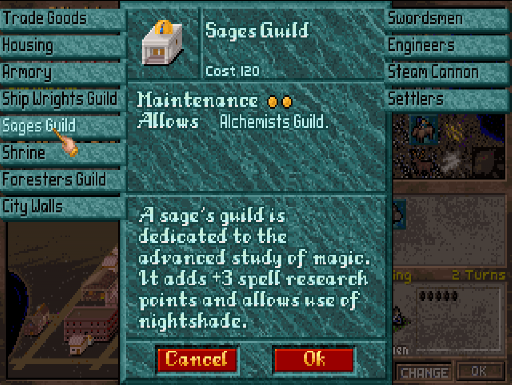
As the year wore on, Goldwash continued to prosper further, with its outlying timber camps expanding and more hunters combing the forests about the town. With the expansion of timbering operations, a number of investors began to deliberately plant fast-growth trees in areas previously clear-cut, planning to reap a continuing harvest of timber in the years to come. Learning and culture likewise thrived, with many savants gathering for learned debate and correspondence in Stonegate. Queen Dagmaer began a pattern that would be characteristic of her reign, inviting local savants to maintain regular correspondence with her and visit her for discussions in the palace on various subjects. Theology, astronomy, astrology, history, geography, alchemy, engineering, mathematics, and the lore of plant and beast were all subjects for discussion in the town and in the palace, and the learned savants of the town improved the defects in their lore while testing their own knowledge in debate.
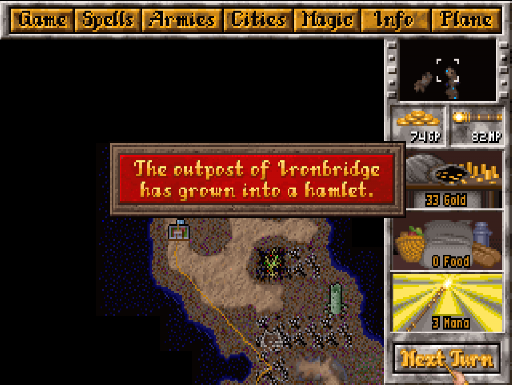
Half a year after the initial settlement of the Blackwater Valley, the little town of Ironbridge, built on the banks of the river next to that first bridge of iron and wood, had grown to a point that it was able to effectively serve as a focal point for the surrounding district, allowing mining of Whiteshoulders to begin in earnest with a town to supply it.
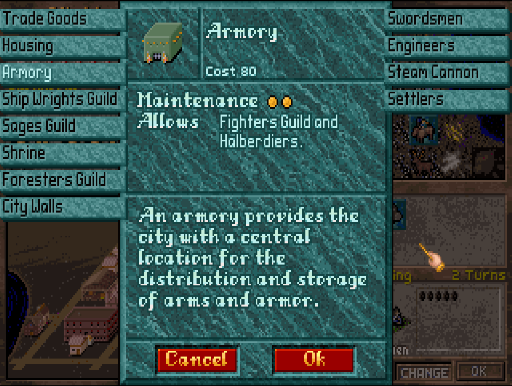
As the year wore on, Queen Dagmaer began to attend to the chore of building up her strength of arms, in such time as she could spare from her studies and her debates. Skilled weaponsmiths and armorsmiths were sought out and commissioned by the crown to supply gear of war for a royal armory, which would allow professional dwarves at arms to be outfitted with heavy arms and armor at the crown's expense. With a force of well-equipped professionals in place of the prior volunteer companies, Dvergursheim might be able to overcome more formidable foes.

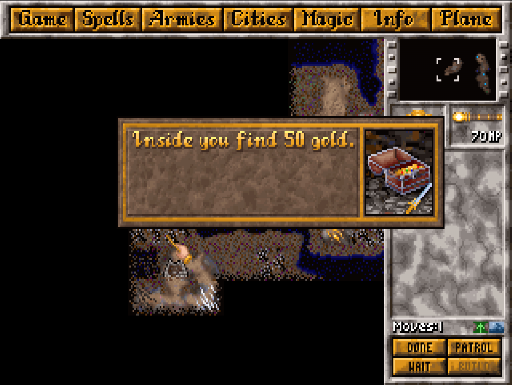
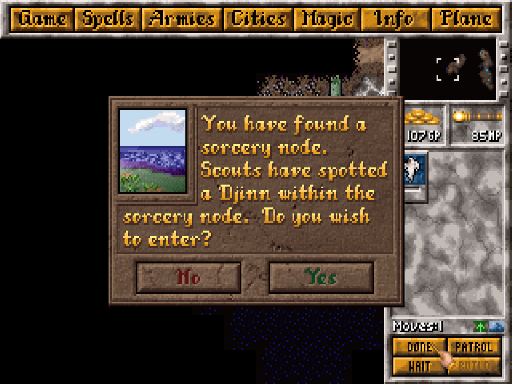
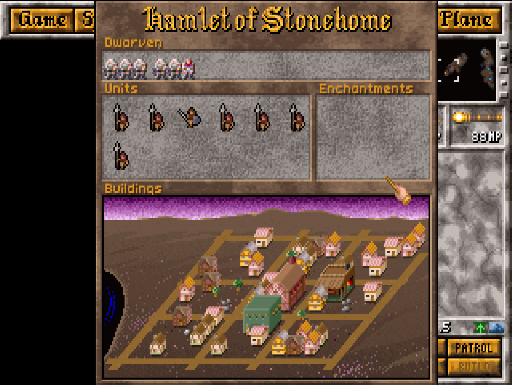
While the work of building continued on Dvergursheim, the Queen's puppet-spirit continued to explore the new land for its master. The tumbled ruins of a lost town were plundered for such treasures as remained, which were transported magically to the vaults of the Royal Palace. Another node of Sorcery was scouted and skirted around, and, in Eleventhmonth, another surviving town was located. A little town of a thousand tradesdwarves in limestone houses huddled in a foul bog, surrounded by a great reach of cultivated land worked by many farmers. The town itself was poor and grim compared to Dvergursheim, focused around a central stone fortress that housed a great host of dwarves-at-arms equipped with suits of mail rings, steel helmets, and pole-axes, the servants of a harsh king, Reinar Reinarsson, who laid heavy taxes on the burghers and farmers under his rule. Although there is discontent and grumbling at his taxes, the patrols of his dwarves-at-arms effectively keep order in his kingdom.
Neutral cities get to 'cheat' a bit on food support for their troops. Although they don't actually have tax mechanics, I am reasonably sure, I can at least estimate the sort of taxes the town would 'really' need to support an army of that size and the unrest that it would cause. The garrison in place would be sufficient to quash the unrest with the taxes this town would need, which would be three times the taxes we are running.
The Kingdom of Dvergursheim in Twelfthmonth 1404
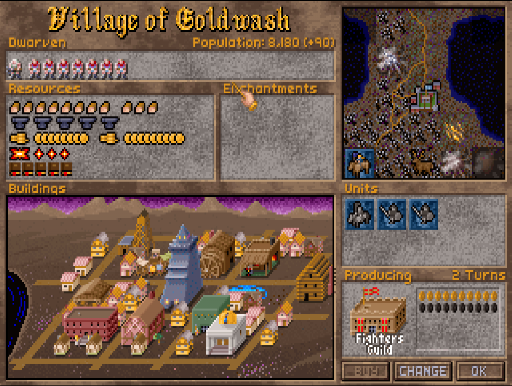
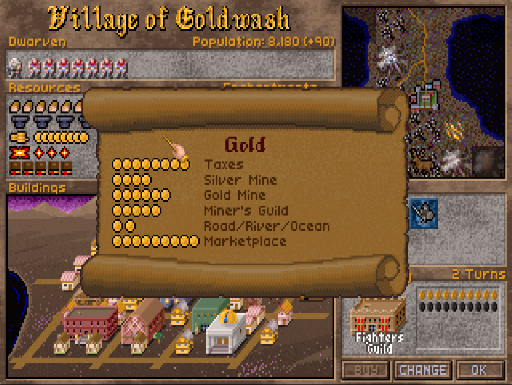
The royal town of Goldwash continues to grow in wealth and magnificence. Glassmakers, lens-grinders, bookbinders, and copyists work a brisker trade, as the activities of the savants of Goldwash have increased. More wood and charcoal reaches the town, fuel for its fires and forges. Traffic along the coast and over the road to Stonegate helps profit the town further.
You can get a full breakdown of sources of any of the outputs of a town by clicking on the output icons, as well as getting a breakdown of expenses by clicking on the coins set aside for expenses on the left of the gold display. Trade with other towns can bolster a town's income through 'road/river/coast' bonuses, which are 10% for a coastal town, 20% for a town on a river, 30% for a town on a river mouth, plus road bonuses, which are one-half percent for every population unit of the same race or one percent for every population unit of a different race linked by road to the town. Road/river/coast bonuses are capped by the total size of a town, to 3% per population unit in the town. Goldwash currently has a 12% road/river/coast bonus (10% for being a coastal town, and 2% for being linked to a size 4 town), and could currently take advantage of a bonus of up to 24% for its population of 8 units.

Stonegate is a quieter town than Goldwash, but its well-ordered farmland, its fisheries, and its commerce have left it far more secure and prosperous than when it was first found by the dwarves of Goldwash. Settlers from Stonegate prepare to make their way south to the shadow of the Gray Mountains, there to mine and farm the area about the mountains. Although maintaining its hold over Stonegate is still a net expense for the crown, the food and learning that now comes from the Red Desert begins to offer some compensations for the cost.
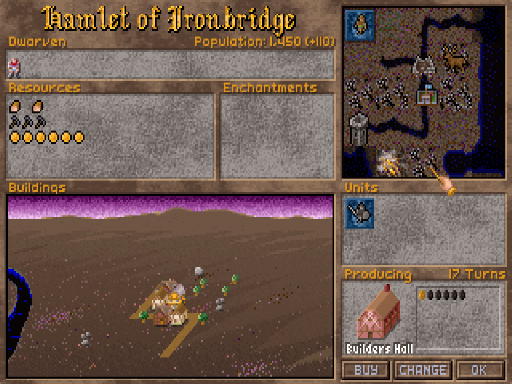
Ironbridge is a little place, serving as a place where the hunters of the forests and the gold miners of Whiteshoulders can trade for tools and supplies, and such artisans as the region supports ply their wares. Still, the rich revenues of the gold mines of Whiteshoulders help bring wealth to the region and fill the coffers of the crown. As the town grows, masons and builders begin to have a market for more permanent structures and the improvement of the town.
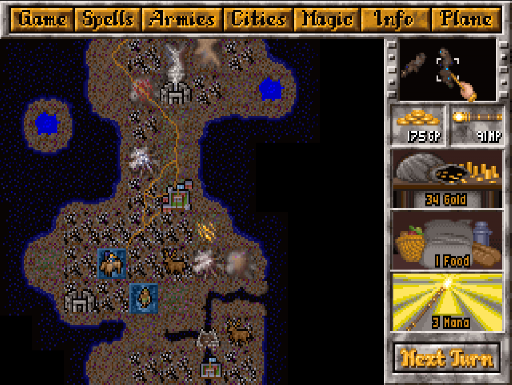
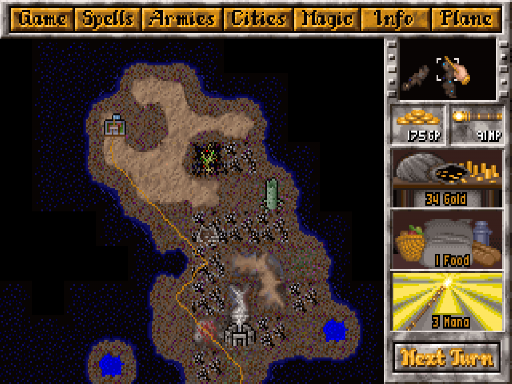
The growing road over Dvergursheim promises to link the whole of the land together. The kingdom's treasury is well-stocked and its revenues rich, giving it much ability to fund any future royal projects.
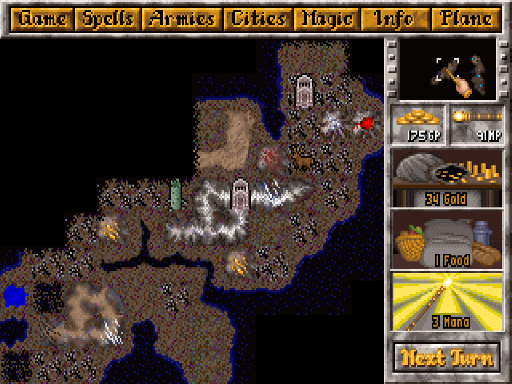

The discovery of gold, coal, more mithril deposits, and the fertile valley of a great river promise great opportunity to settlers in the new land. The westernmost reaches of the explored land is dominated by Stonehome and its outlying districts, a patchwork of good farmland, the occasional quarry in the places where the plains are broken by stone outcroppings, and sodden bog dredged by the dwarves of the region for bog iron and peat. Stonehome itself lurks in the defense of a gloomy bog, armed and arrayed for brutal warfare against any monsters that might violate the town.
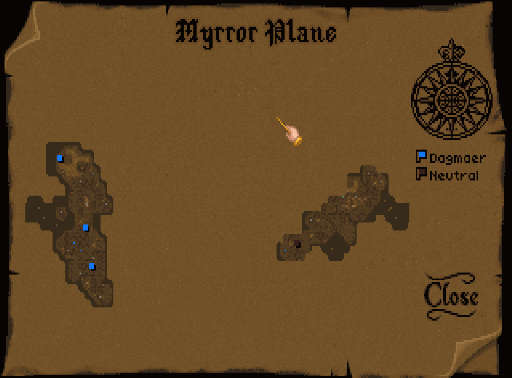
The savants of Goldwash estimate that Stonehome must be on nearly the opposite side of the world. Queen Dagmaer's puppet-spirit has travelled far, perhaps halfway around Myrror. While the sun burns like a silver lantern in the dim sky in Goldwash, the black night is lit by the many stars in Stonehome.
1405 approaches, with the kingdom of Dvergursheim having grown and prospered over last year. Much might be done with the wealth of the crown in Stonegate or in Ironbridge, and Goldwash might soon be able to muster a professional army to pacify the land. That said, were the muster delayed, it might be possible to better-equip its soldiers, using alchemy to refine new ingots for the smiths and providing greater supply of magical power to the Queen. Might the prosperity of 1404 continue into the future!